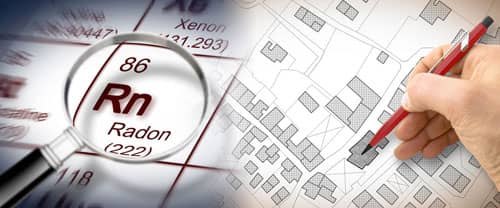Sub-Slab Depressurization For Radon Mitigation
One of the most common solutions for removing radon gas
What‘s a Sub-Slab Depressurization Mitigation System?
The Sub-Slab Depressurization Radon Mitigation System is a highly effective solution designed to combat the presence of radon gas in residential and commercial buildings.
Sub-Slab Depressurization Mitigation Systems can be installed in buildings where radon levels are high utilizing a combination of active and passive mitigation techniques to reduce radon levels to a safe concentration. These systems use PVC piping and a radon removal fan to pull air through slab foundation and up to the roof. It involves the installation of a specialized vent pipe, typically located beneath the building’s foundation, which extends above the roofline. A powerful fan is then connected to the vent pipe, creating a vacuum effect that sucks out the radon gas from beneath the building.
The key principle behind the Sub-Slab Depressurization Radon Mitigation System is to create a pressure differential between the soil beneath the building and the indoor air, forcing the radon gas to be expelled outside rather than seeping into the living or working spaces. This process is carried out continuously, ensuring that radon levels are consistently kept below the recommended exposure limits.
Types of Sub-Slab Depressurization for Radon
If you’re considering using a sub-slab depressurization mitigation system to reduce radon levels, you have several options:
Passive Sub-Slab Depressurization:
Passive sub-slab depressurization systems aren’t as effective in reducing radon levels as active soil systems are, but they are often easier to install in newer homes. Rather than using a radon removal fan, these systems rely on the “stack effect” to function. Essentially, they take advantage of differences in air pressure to move radon through the system and back outdoors.

Active Soil Inside Your Home (Interior System):
An active sub-slab mitigation system that’s installed inside the building is the most common solution for radon. That’s because it’s frequently effective in removing radon gas, and it’s mostly out of the way.
Instead of having a sub-slab depressurization system contractor install pipes outside of your home or business, an interior system will typically see pipes installed in the basement or garage. From there, they’ll run through closets and other out-of-sight areas and up to the attic, where they’ll filter the gas outside.
Active Soil Outside Your Home (Exterior System):
This type of sub-slab depressurization mitigation system functions in the same way as active soil systems installed indoors. The only difference is that the piping is installed on the outside foundation of the home.
This is an ideal solution for buildings with layouts that don’t easily allow for the installation of an interior system. The pipes may be more noticeable in an exterior system, but there are ways to make them look more concealed, such as placing piping on a side of the house that doesn’t face the street or painting them a similar color to the house.

